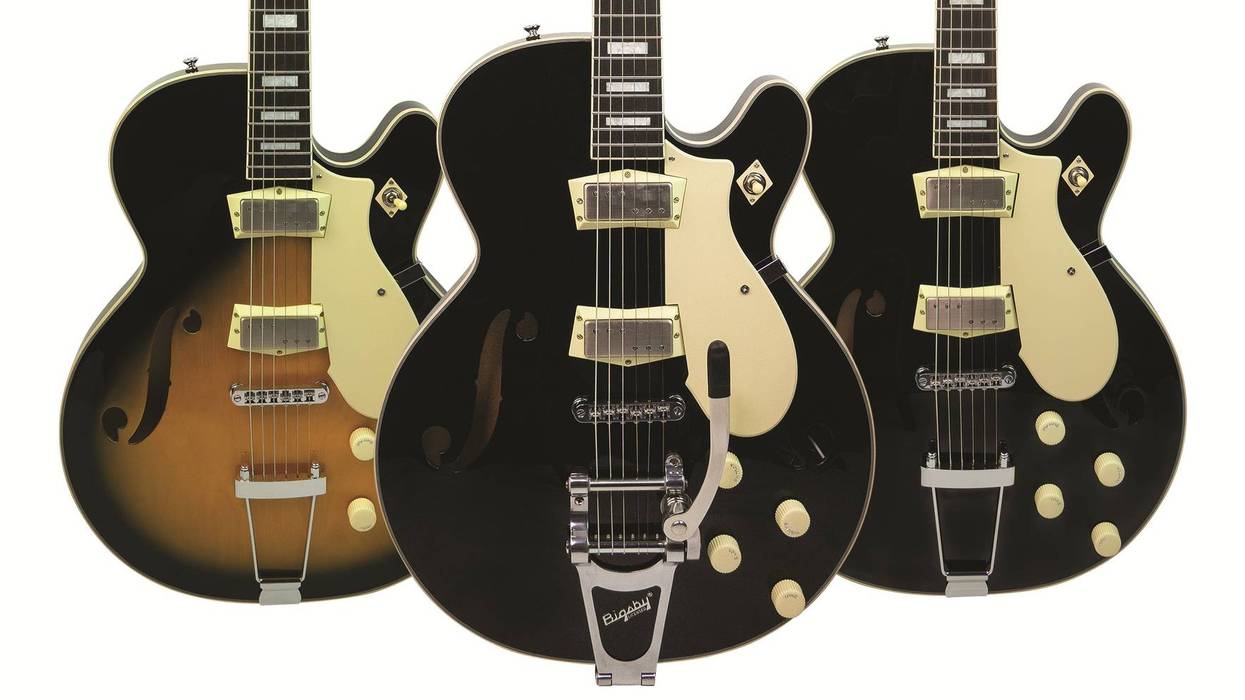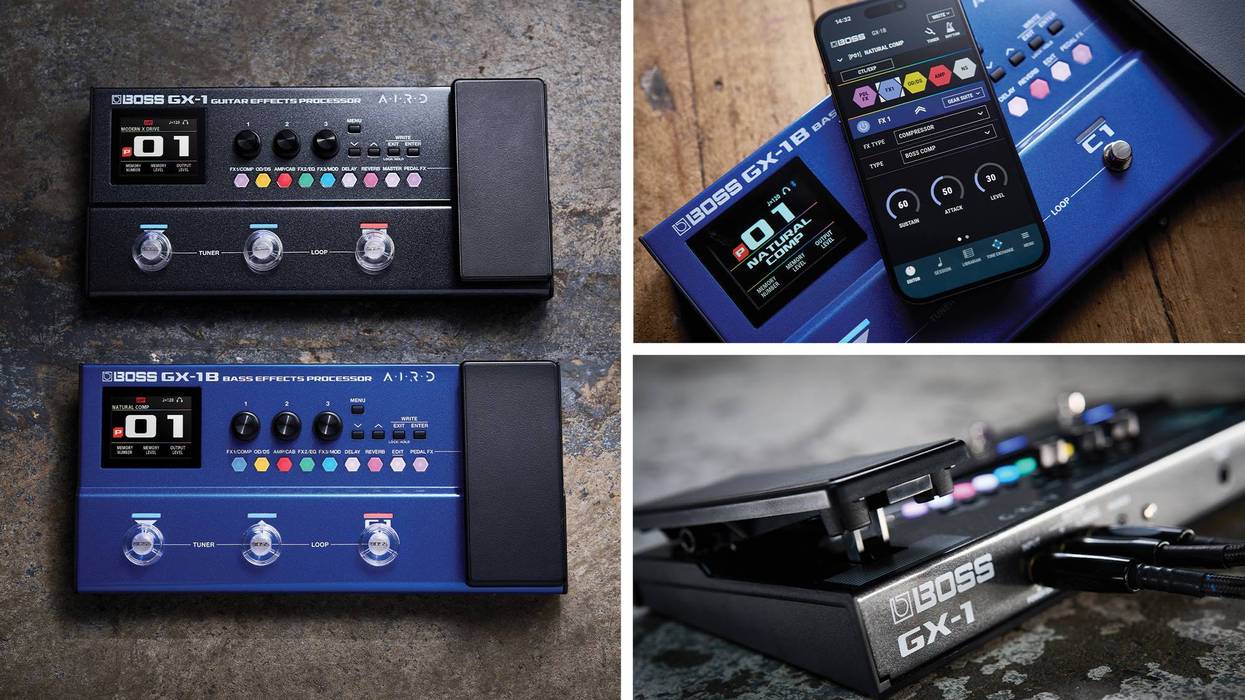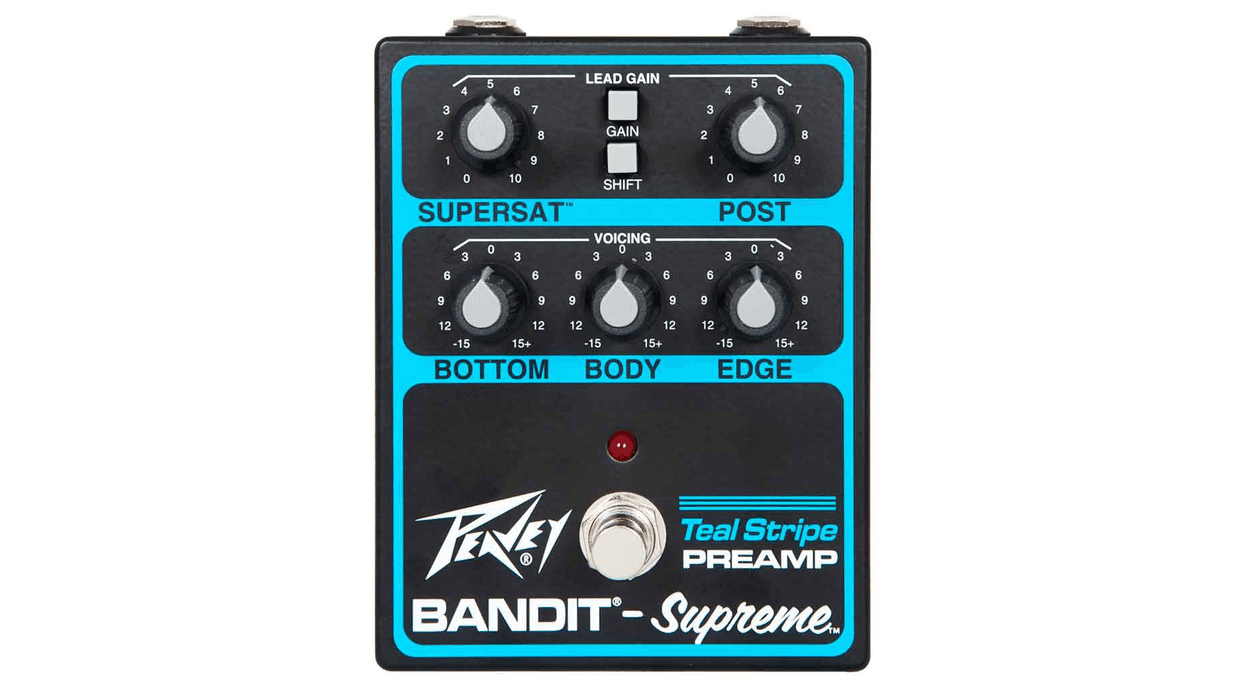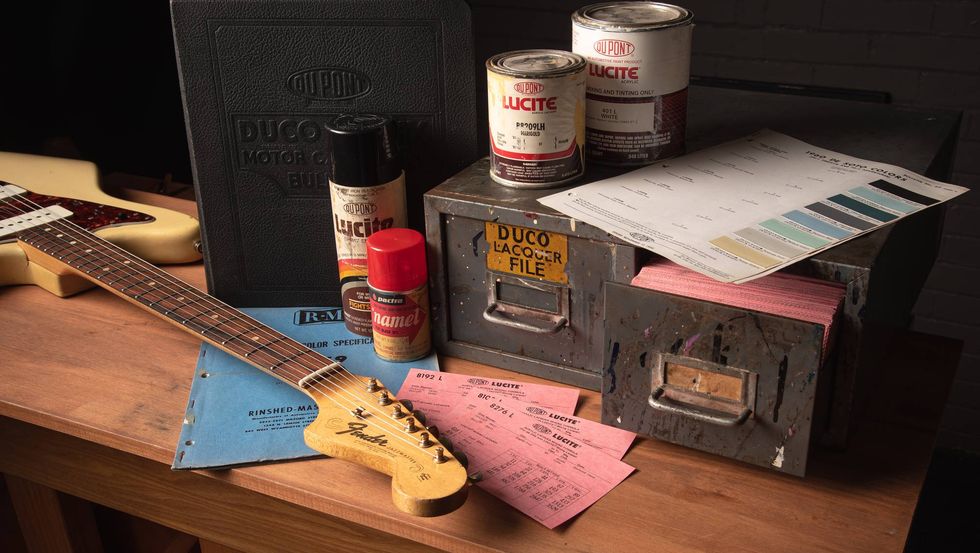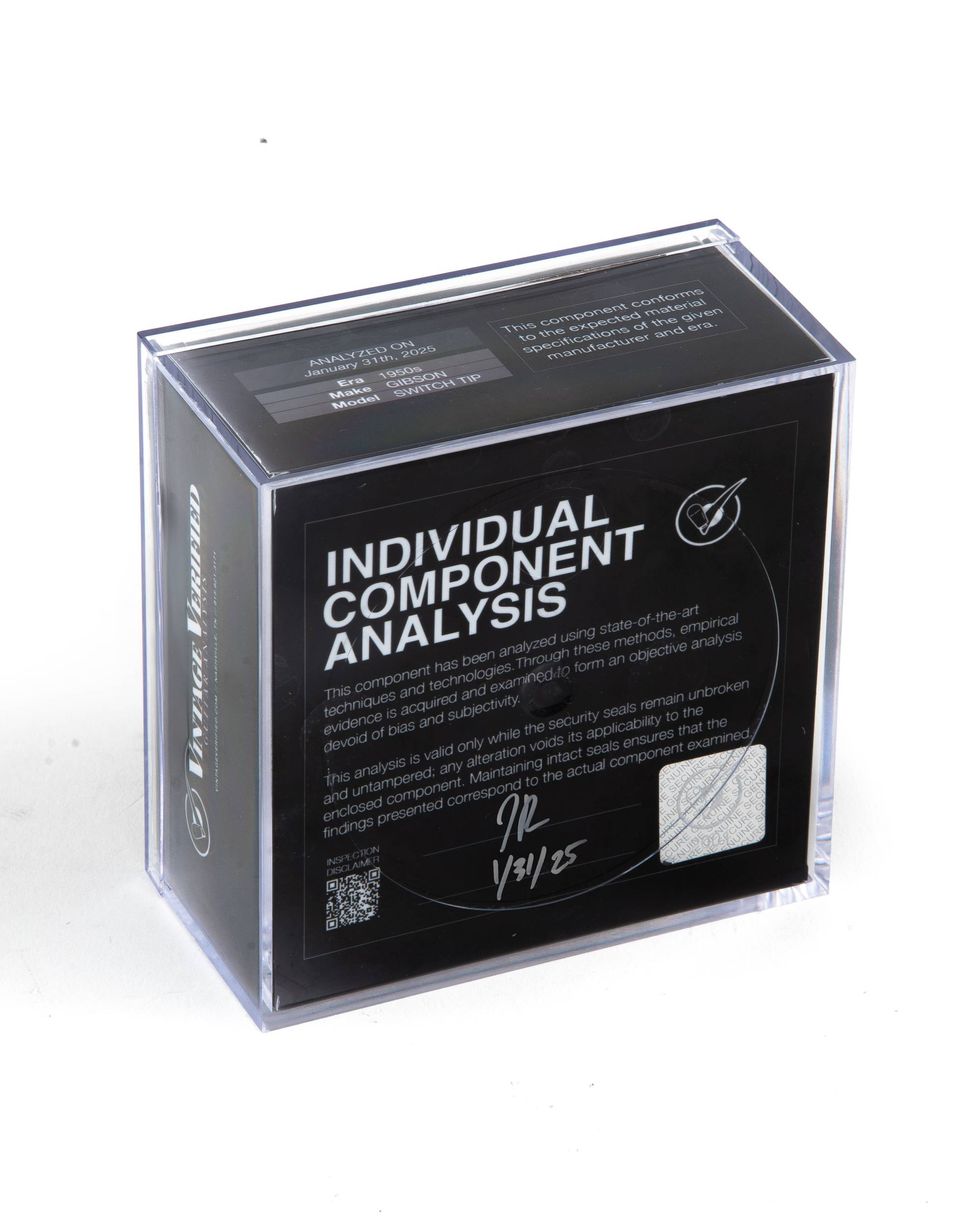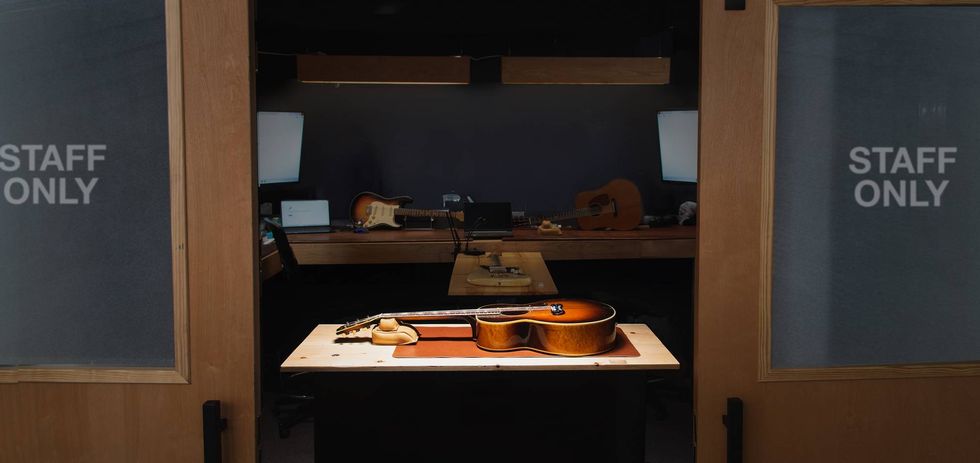Back in the ’60s, it was so simple—guitar-cable-amp. If you were an electric guitarist, you plugged your axe of choice into your amp, and that was usually all you needed to achieve tonal nirvana. Then along comes Hendrix with his newfangled wah-wah pedal and a fuzz unit, and all of a sudden, guitarists everywhere needed those sounds!
In the ’70s, we had Robin Trower with his Univibe, Alex Lifeson and Andy Summers with their Electric Mistress flangers and echo units, Brian May with his treble boosters, Eddie Van Halen with his Phase 90 and MXR flanger—the list goes on. Guitarists of all genres were running all types of boxes into their amps, and the pedalboard craze was born.
In the ’80s, with the advent of new digital effects units, the “refrigerator racks” appeared on the scene—custom rigs built for the studio and touring pros of the day. Effects loops in guitar amps also became commonplace—allowing guitarists to insert line-level effects after the distortion generating preamp stages of their amps, and before the power amp stage—a big tonal improvement when using time-based effects like delay and reverb.
In the ’90s, the “wet/dry/wet” guitar rigs started to appear. Basically, you have a dry guitar signal that stays unmolested by any effects or processing—then a tap is taken off this dry signal and fed to effects units. Next, the effected signal is amplified through separate amps and speakers, and blended with the aforementioned dry signal.
The reality is, each of these approaches to adding effects to your tone has advantages and disadvantages. Are you a no-effects type of player, or a pedalboard kind of player? Maybe you like some pedals for your dirt, but would like your delay and reverb in the effects loop of your amp. Or maybe you would like to go the full on w/d/w route, for the ultimate in power and programmability! Let’s take a closer look at the options that are out there.
Plugging Straight In
There is a beauty to the guitar-cable-amp approach. It doesn’t get any easier, unless you take up playing the flute. And the lack of toys to mess with will certainly make you focus on playing more. By changing your pick attack, vibrato, or the volume and tone controls on your guitar—you’ll rely on your hands instead of stepping on a box to change tones. I believe it’s beneficial for all of us to just plug straight in at least once in awhile and rock out with unadulterated tone.
Pedalboards: Pick Your Poison
Pedalboards are just plain fun. You can mix and match any number of little boxes and really personalize your tone. We are living in the golden age of guitar pedals right now with such a huge variety of effects out there. The majority of effects fit into one of the following categories: gain (overdrive, fuzz, distortion, compression, clean boosts), filter (wahs, auto-wahs, envelope followers), and time-based (delay, reverb, chorus, flange, phase).
If you like to run all your effects into an amp set clean and get your gain sounds from pedals, you probably don’t ever need to consider using amplifier effects loops or a wet/dry/wet rig. If your amp(s) are set relatively clean, you will be able to use any of the effects listed above straight into the front of the amp—and they should sound really good.
If you use amplifier distortion, certain time-based effects will not sound as good run in front of your amp. Which brings us to...
Effects Loops
Reverbs and delays can sound particularly unruly when run into an amp set dirty. If you use natural amp distortion but still like using pedals, you can run some effects into the front of your amp, and run time-based effects into an effects loop (most modern amps with channel switching will have an effects loop). Some modern programmable pedals, such as the TC Nova System or Eventide Time Factor delay, allow you to switch between -10 and +4 operation, so you can use them in front of your amp at the instrument level or at line level in an amp effects loop. This is really handy, allowing you to create and store presets tailored for using the pedal either in front of the amp or in the loop. Of course you can also use studio-type rack effects in amp effects loops. Units such as the Fractal Audio Axe FX and TC Electronic G-Major work great in this configuration, allowing you to store many presets and get pristine time-based effects, whether you are using clean sounds or dirty sounds.
Wet/Dry/Wet Rigs
Some guitarists feel that using effects loops to blend effects with their dry tone is a compromise, affecting the immediacy and feel of the tone. The advantage to running a w/d/w rig is that you keep your dry guitar-amp-cabinet tone intact, and add effects independent of your dry signal. You can accomplish this in a couple different ways:
1) Mic your guitar cabinet, running the mic signal into a simple mixer with your effect units patched in on effects sends and returns. Run the mixer into a power amp and full-range speakers, or powered full range monitor speakers (the “wet” cabinets), placed on either side of your dry cabinet. Set the effects units 100 percent wet and blend in the amount of effect you want into the wet cabs. Use a MIDI foot controller to change presets on the effects units, and add an expression pedal to control things like the output volume of the effect signal, or the feedback of a delay. For live applications, the soundman can mic your dry cabinet separately and take a stereo line-out signal from your mixer for the effects, panning the effected signal hard left and right in the PA. Guitarists such as Eric Johnson and Larry Carlton have used this approach.
2) Use a line-out box (I use the Suhr Iso Line Out box) between your amp and dry speaker cab to take a tap off the dry signal. Run the line-out signal into a small mixer, and run the outputs of the mixer into a stereo power amp and two guitar cabinets. As with the previous rig, use the mixer sends and returns to patch in effects—which you will set at 100 percent wet (no dry signal) and blend to taste. In this setup, you can blend the dry signal into your “wet” cabinets. For live applications, mic all three cabinets, and pan the wet cabinets hard left and right in the PA. This is the setup I use, and I was inspired to go this route by guitarists such as Steve Stevens and Eddie Van Halen. I like to blend a significant amount of dry signal into the wet cabs. In the PA, the sound is absolutely massive! I also use an expression pedal to control the amount of effects in my wet cabs, so I can tailor my delays and reverbs on the fly.
What’s right for you?
Using a pedalboard only, with all effects run in front of the amp, is the easiest way to go. There’s simply less gear to haul and set up, fewer cables to patch, and less that can go wrong. If you want simplicity, or if you like your guitar tones relatively dry and use effects sparingly, simply use clean to semi-dirty amp sounds.
If you use amplifier overdrive, want to use delay and reverb but still crave simplicity—I’d suggest designing a “hybrid” pedalboard. Just run your gain and filter effects in front of the amp, and use a pedal like the TC Electronic Nova System in your amp effects loop for time-based effects. This will require more cabling between your pedalboard and amp, but will sound much better than running your delay and reverb effects into a distorted amp. Pedals like the Nova System or the Eventide units boast specs rivaling studio quality rack gear.
If you really want ultimate tone and control, it’s hard to beat a w/d/w type rig. You have ultimate power and control over your tone in a rig like this. Of course, a rig like this probably isn’t going to fit in the trunk of your car! But the massive tones and ultimate control will have you running out to buy a bigger vehicle (or hiring roadies). Don’t say I didn’t warn you....
Last but not least—if you are not handy with a soldering iron—I’d suggest having your pedalboard or rack rig custom built. A good source is Dave Friedman from Rack Systems in North Hollywood, California, who does all my rack and pedalboard work.
Good luck!
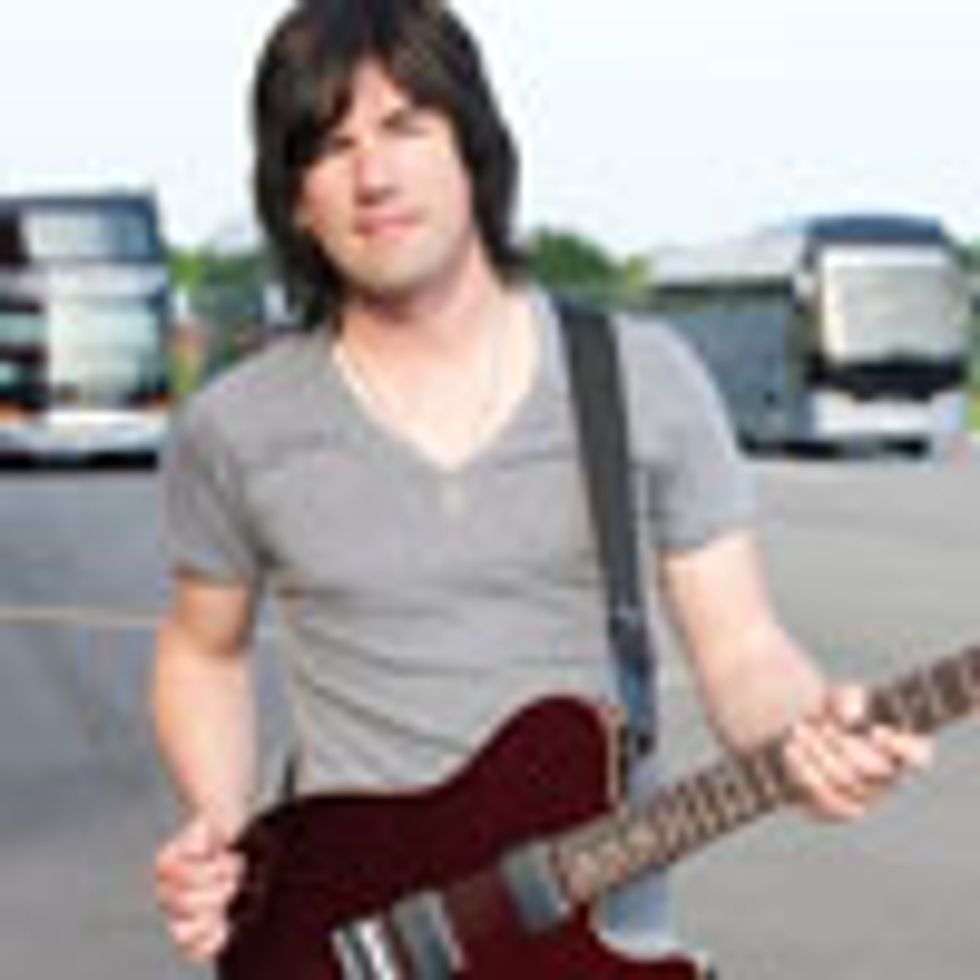 Pete Thorn is a Los Angeles-based guitarist, currently touring with Melissa Etheridge. His solo album Guitar Nerd will be out in early 2011.You can read more about his career and music at peterthorn.com.
Pete Thorn is a Los Angeles-based guitarist, currently touring with Melissa Etheridge. His solo album Guitar Nerd will be out in early 2011.You can read more about his career and music at peterthorn.com.








